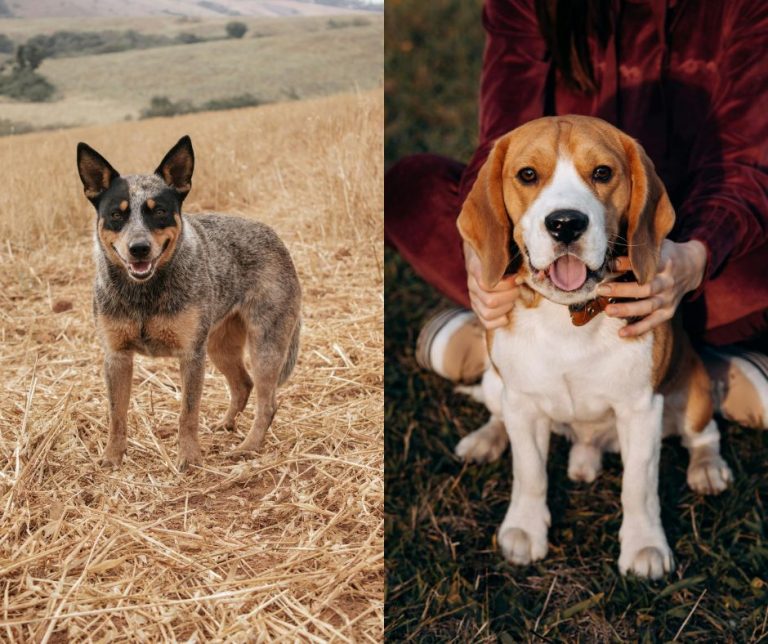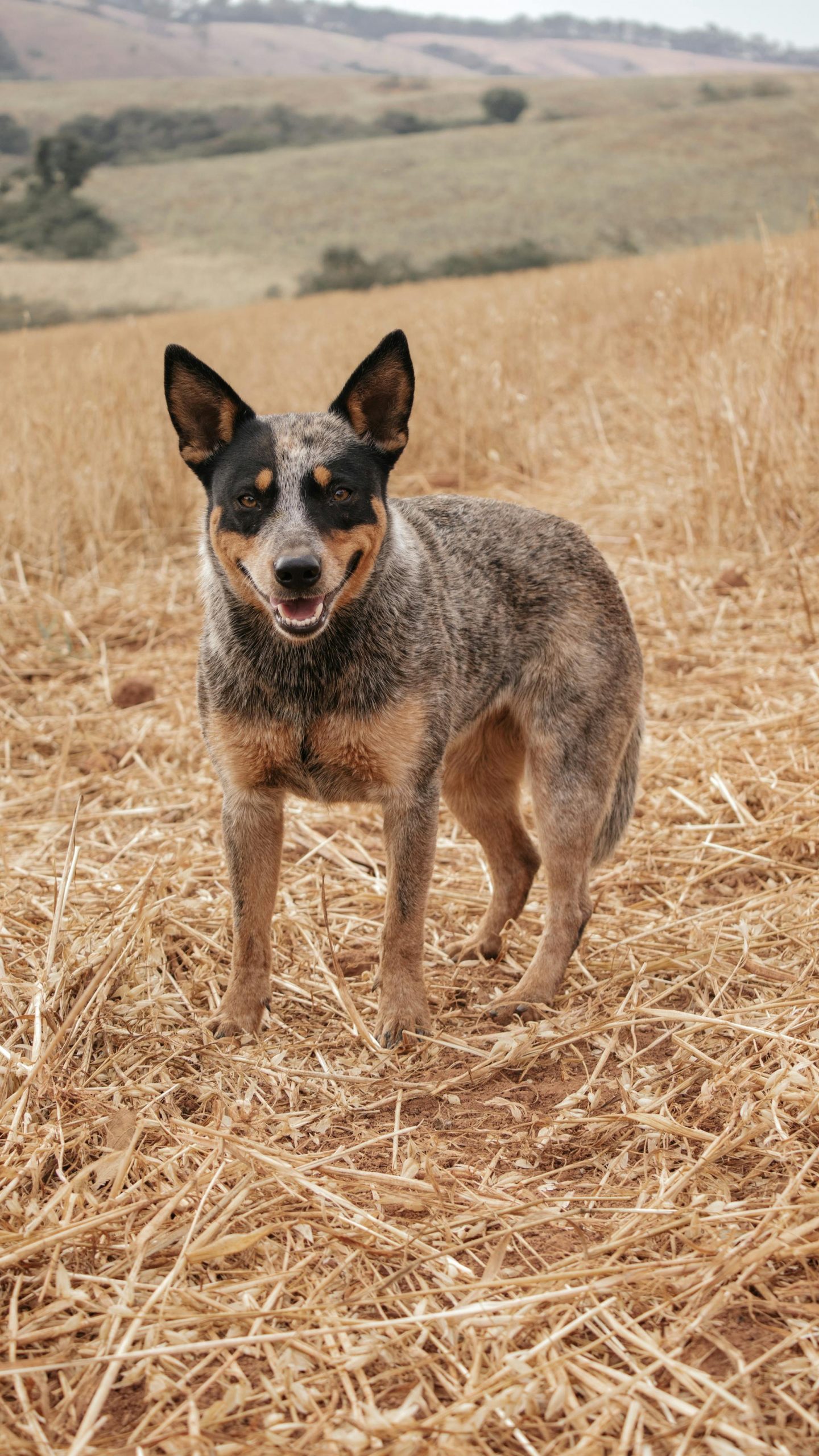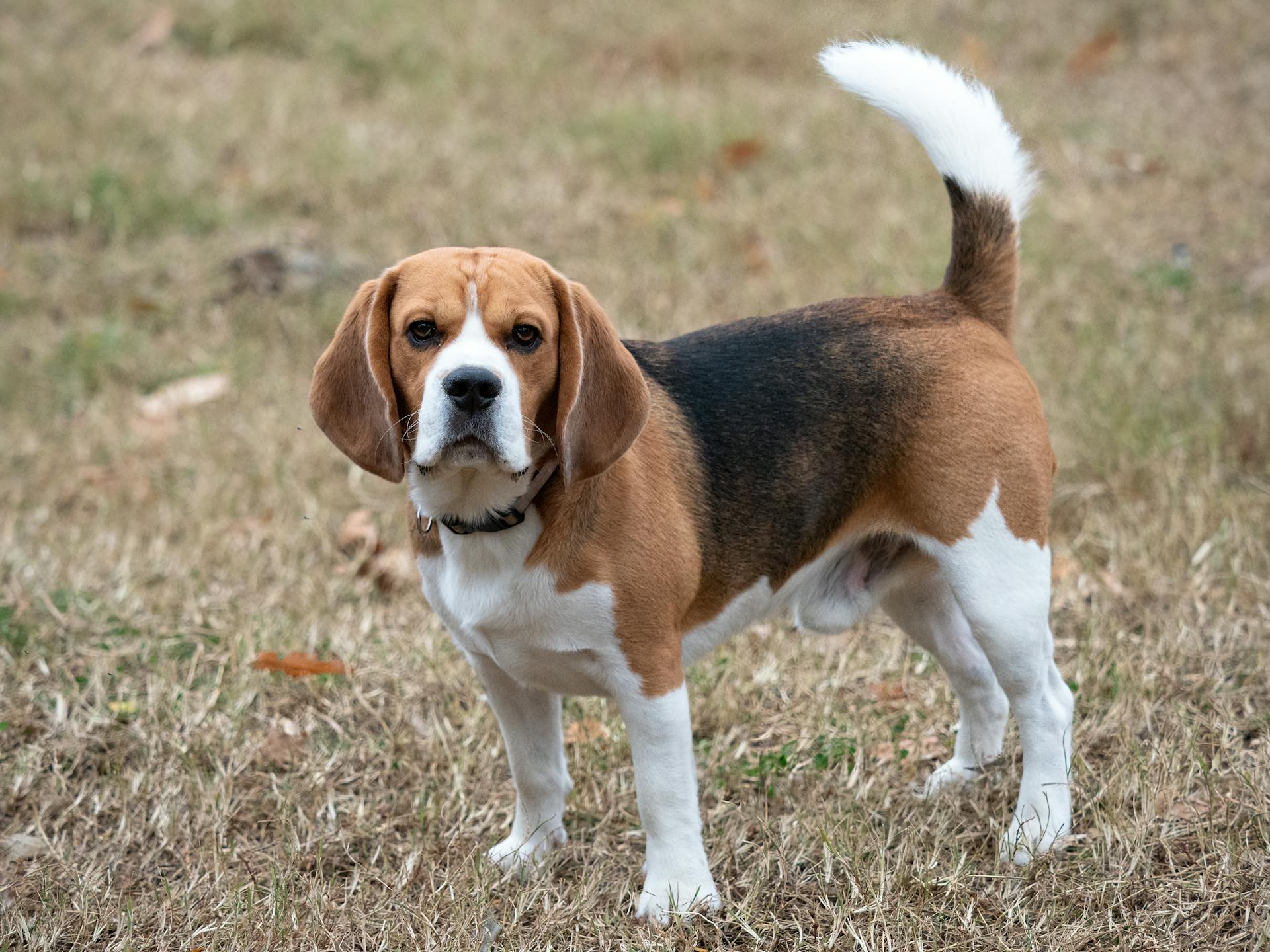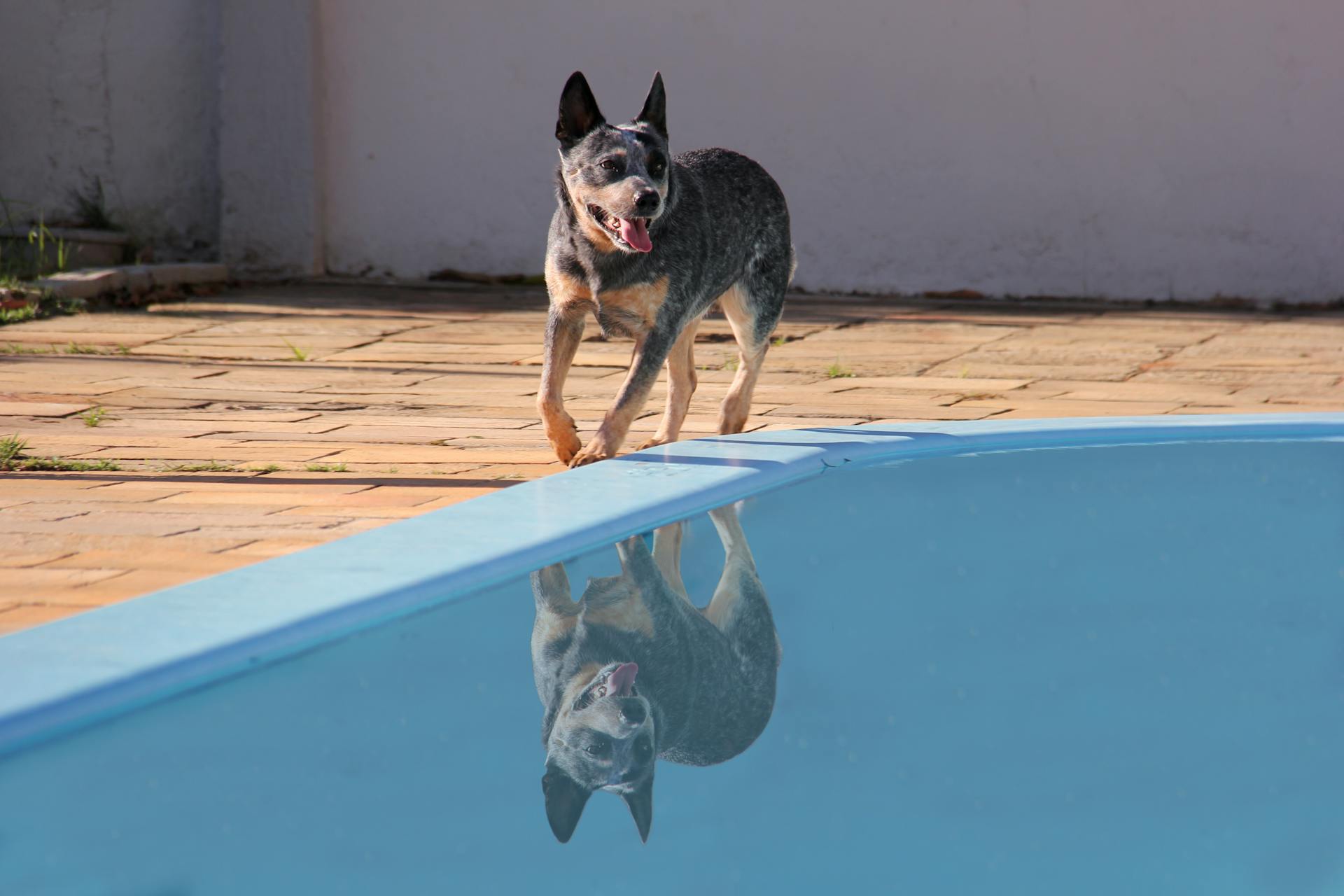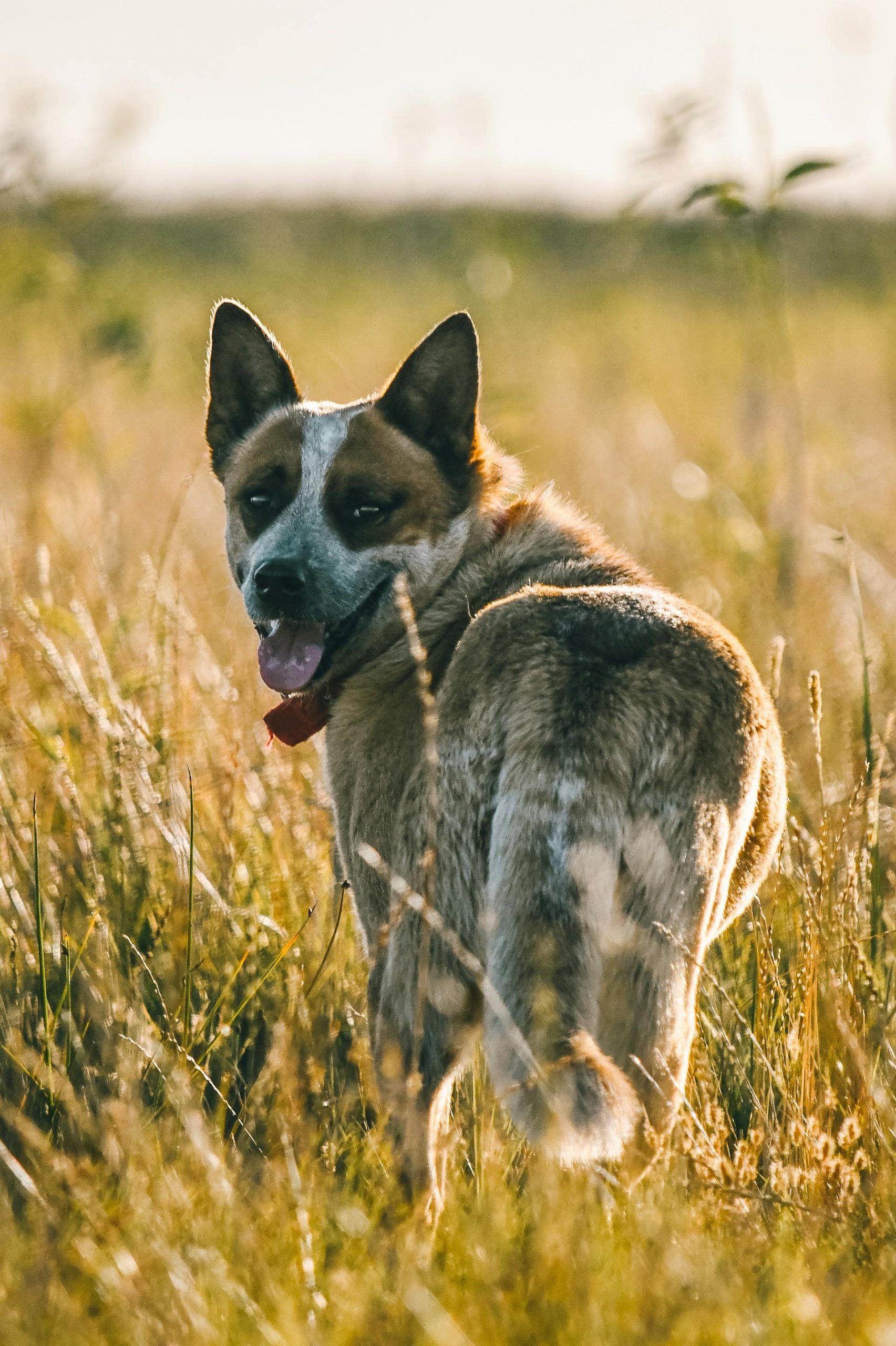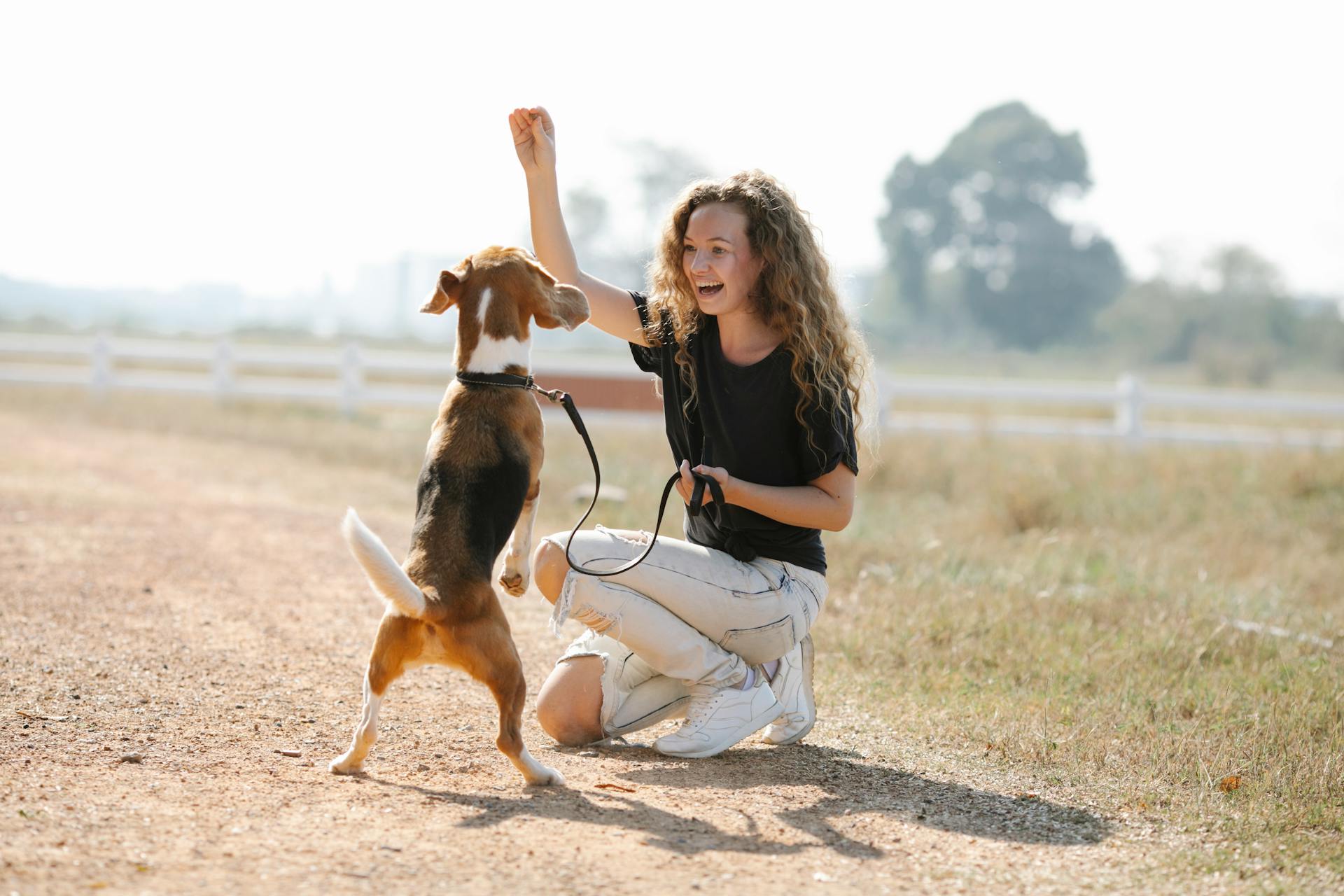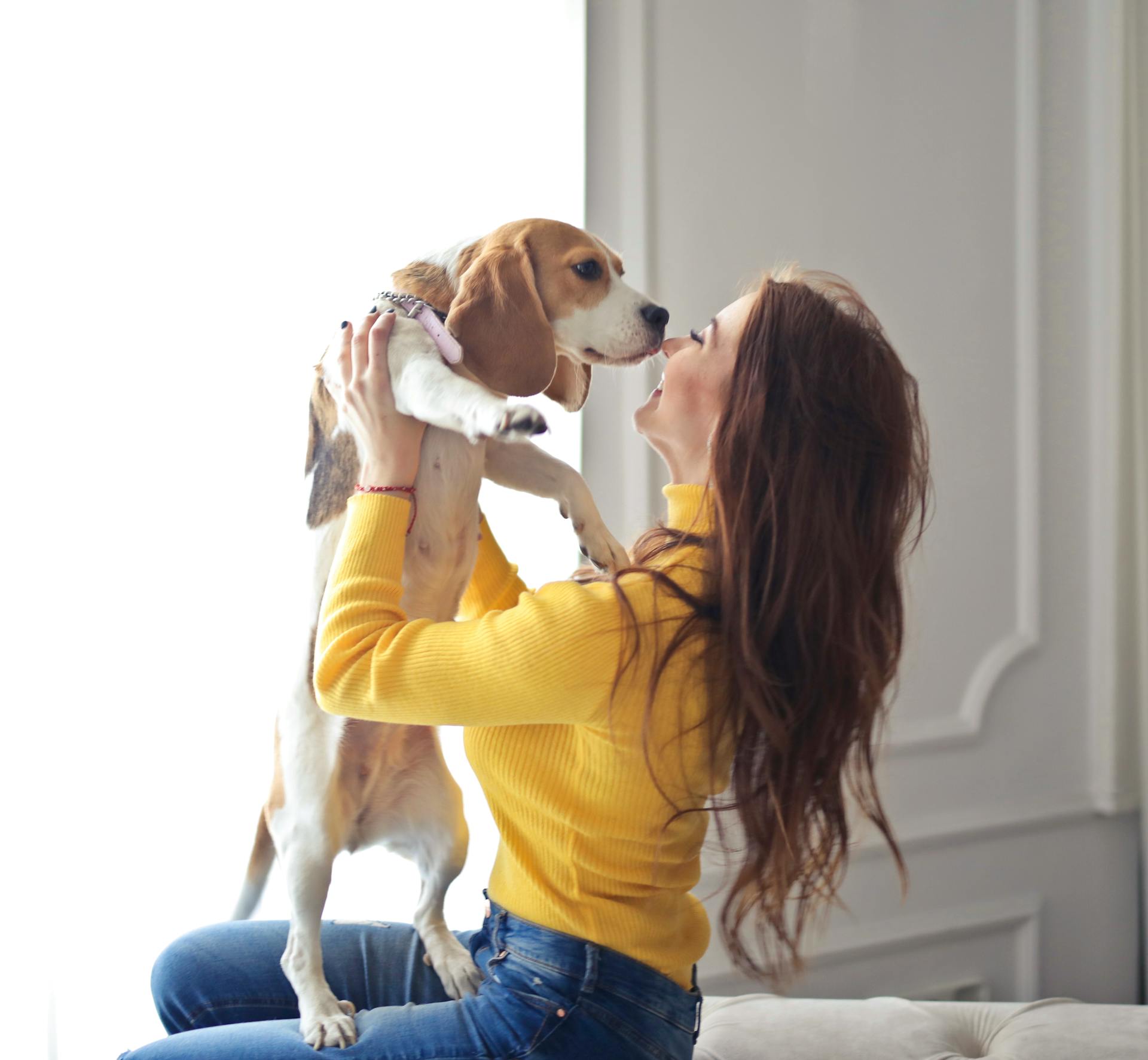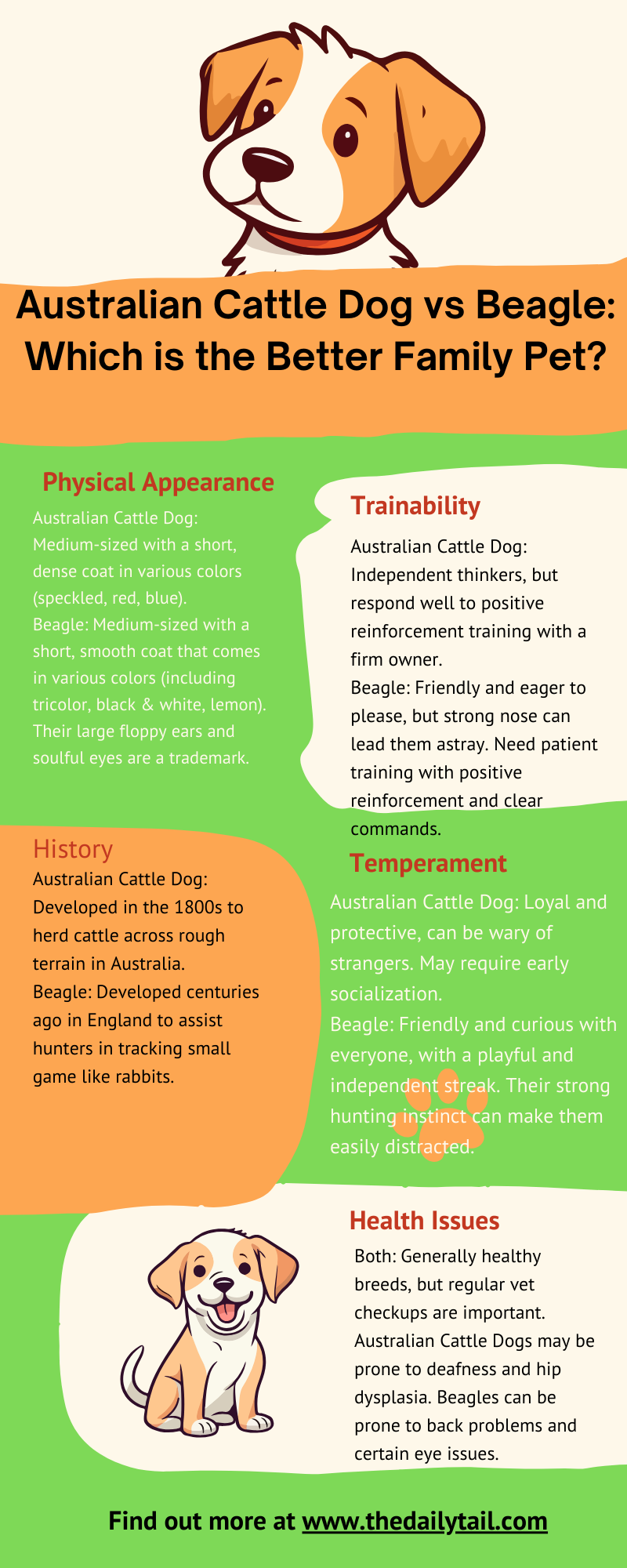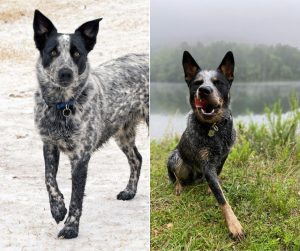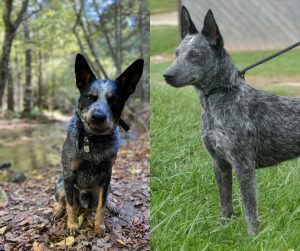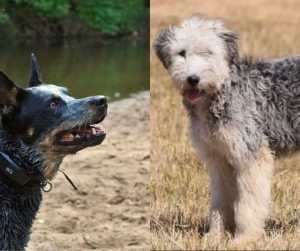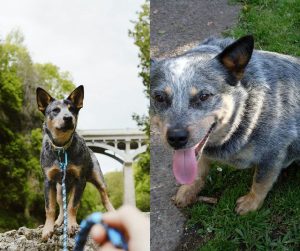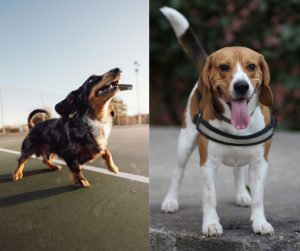There are a couple of things prospective pet parents should look for in a family pet. There are different aspects to consider. For starters, the type of pet and how it fits your family’s lifestyle. Then, you should look at things like ease of training, temperament, exercise needs, health, appearance (big or small dog), and so on.
As someone who has spent most of his life around dogs, I know it might be a challenge to choose between two dogs that you love. For example, when I got my Jack Russell, I also considered getting a Beagle.
Today, I want to help future pet parents make the decision between Australian Cattle Dog vs Beagle dog breed. Both of these popular dog breeds have their strengths and weakness.
For example, the Cattle Dog is famous for its herding abilities and high spirit. They thrive in active environments. Beagles, with a history deeply rooted into hunting, have an amazing scent. While at one point, both of these were working dog breeds, they have adjusted to the family lifestyle.
So, let’s take a look at the differences between the two. Each one is suited for a different lifestyle, but both can make amazing family pets. Once we take a look at their origin, temperament, exercise needs, we can make an educated decision.
Key Takeaways
- Australian Cattle Dogs are energetic workaholics best suited for pet parents with an active lifestyle. Beagles are also high-energy dogs, but require less work
- Both dog breeds require training, with Australian Cattle Dogs needing firm leadership and Beagles benefiting from gentle guidance.
- Care routines vary, with Australian Cattle Dogs needing more frequent grooming compared to the lower maintenance Beagle.
Origins and History
To understand the temperament of any dog breed, you have to look at its origin and history. That is our starting point today. So, let’s begin. Looking at the history of these two, they have had a different path. Both were once a working breed, but have evolved and adjusted to the modern lifestyle. Their path is all about about work and companionship.
Australian Cattle Dog Origins
The Australian Cattle Dog dates back to the early 19th century in Australia. The settlers needed a tough, tireless worker to herd cattle over wide, rough terrain, and thus this breed was developed. They combined native Dingoes with herding dogs like the Smithfield to create the robust and intelligent ‘Blue Heeler’.
Thomas Hall was the man who managed to bred the first Australian Cattle Dog. For that, some people recognize the dog as Halls Heeler. Nowadays, judging by their coat color, we have Blue Heeler and Red Heeler dogs.
Beagle Background
Beagles have a history that goes way back to the Roman Empire times, but they really shot up in popularity in England. At the time, there was a need for a dog that could hunt small game by scent. During the 16th century, Beagles were popular option for hunting and remained a beloved companion ever since.
Breed Development and Recognition
Australian Cattle Dogs got officially recognized as a breed by the American Kennel Club in 1980. Known for their sharp smarts and vigor, they’re a product of years of careful breeding.
Beagles, recognized by the AKC way back in 1885, are deeply anchored in the hunting dog lineup. They were bred smaller over time to become the compact and merry buddy we know today.
Famous Examples of Each Breed
For fans of the Australian Cattle Dog, one might remember ‘Bluey’, a record-holding pup known for living a whopping 29 years! A testament to the breed’s resilience and longevity.
On the other side, pop culture has given us Snoopy from Peanuts to forever charm us as the iconic Beagle figure, showcasing the breed’s friendly and curious nature to audiences globally.
Physical Characteristics
When comparing the Australian Cattle Dog vs Beagle dog breed, we notice that they each have unique features that make them quite special. From size to coat color, and even ear shape, each breed has its own distinctive look.
Australian Cattle Dog Appearance
Australian Cattle Dogs, often referred to as Blue Heelers or Red Heelers depending on their coat color, carry a compact frame. They are typically larger than Beagles:
- Size: They stand about 17 to 20 inches at the shoulder.
- Weight: Weight ranges from 35 to 50 pounds.
In terms of their coat:
- Coat Color: They can be blue or red speckled/mottled with possible dark or tan markings.
Their ears are upright and alert, adding to their attentive expression.
Beagle Traits
Beagles charm with their soft facial features and friendly expression:
- Size: Beagles are smaller, standing around 13 to 16 inches tall.
- Weight: They generally weigh between 20 to 30 pounds.
Their coat and coloring are quite distinctive:
- Coat Color: They display a variety of colors including tri-color, red and white, and lemon.
Beagles have long, floppy ears that hang down, a stark contrast to the upright ears of the Australian Cattle Dog. They’re known for their soulful eyes and merry disposition.
Personality and Temperament
Prospective dog owners looking for a new family companion should always look at the temperament of their pet. So, let’s see how these two are different.
Australian Cattle Dog Temperament
Australian Cattle Dogs:
- Personality: Famous as a hard-working dog with a sharp mind, the Blue Heeler breed loves to have a job at all times
- Temperament: They are naturally protective, sometimes wary of strangers. Those two personality traits make them good watchdogs. The Cattle Dog takes its role as a herding breed seriously, and will always be serious during working hours
- Energy Levels: High energy, heelers need plenty of exercise to keep their mind happy and their body healthy. They need at least 60 minutes of physical activity and mental stimulation per day
- Affection: Yes, Heelers can be affectionate with the family members, but they are not your typical cuddly dog, for example, like the Golden Retriever. They prefer to work
- Social Aspect: Good with kids and other pets when socialized early on. They can show herding abilities around children, but with early socialization, you can handle that
Beagle Behavior
Beagles:
- Personality: Friendly and curious dogs, they have a natural instinct for sniffing out scents and exploring their surroundings
- Temperament: Unlike Cattle Dogs, Beagles are less about the serious business and more about the fun. They score well on temperament tests, showing their typical friendly and easy-going temperament
- Energy Levels: They come with a fair amount of energy, needing regular walks and playtime. Expect to dedicate around 90 minutes a day to keep a Beagle at its best
- Affection: Beagles are generally very loving and enjoy spending time with their people, making them great companions
- Social Aspect: These dogs are usually very social, getting along with other dogs and humans alike, especially when introduced properly
Health and Wellbeing
All pet parents want a dog that will remain with the family for a long time. Health plays a huge role when choosing a family pet. For starters, sometimes vet bills can go high. So, you want a dog that is healthy. So, let’s take a look at the well-being of Australian Cattle Dog vs Beagle.
Australian Cattle Dog Health Concerns
Australian Cattle Dogs are tough, but they’ve got a few health issues to watch out for. The breed’s active lifestyle means that hip dysplasia can be a concern; it’s where the hip joint doesn’t quite fit right, leading to arthritis or discomfort. They can also face hereditary deafness, so it’s wise to have their hearing checked. Progressive retinal atrophy, a degenerative eye disease, is also known to occur in this breed. Here are their common health problems in a nutshell:
- Hip Dysplasia
- Progressive Retinal Atrophy
- Deafness
One can expect an Australian Cattle Dog to have a life span of around 12 to 15 years, provided they’re well cared for.
Beagle Health Issues
On the flip side, Beagles have their own set of challenges. Epilepsy is sometimes seen in the breed and might require medication. Hypothyroidism is another condition that’s not too rare; it can mess with their metabolism. Beagles love food, which can lead to obesity if they’re not exercised enough—keep those pups active!
They can also experience allergies causing skin and ear issues, and patellar luxation, where the knee cap moves out of its normal location. Let’s break down their common issues:
- Epilepsy
- Hypothyroidism
- Obesity (watch their diet!)
- Allergies
- Patellar Luxation
Beagles typically enjoy a life span of 10 to 15 years, health and care permitting.
Exercise and Activity Levels
When picking a furry friend, considering how much exercise and play they need is pretty important. Some dogs like to chill more, while others have a go-go-go vibe. Let’s break it down for the Australian Cattle Dog and the Beagle, to see which pooch might suit your lifestyle.
Australian Cattle Dog Activity Needs
Australian Cattle Dogs are workaholics, born to herd, and they’ve got stamina for days. They’re super playful and need a good deal of exercise daily. If they’re not on a farm rounding up sheep, they’ll want lots of games and runs to keep them out of trouble. Here’s what’s important for these energetic pups:
- Energy Level: High octane, ready to roll
- Exercise Needs: Top-tier
- Favorite Activities: Herding, fetching, running
- Playfulness: Ever-ready for fun and games
Beagle Exercise Requirements
Then there are Beagles, born with sniffers that won’t quit and a love for the chase. Hunting’s their game, and they’ve got a spring in their step to match.
Beagles do need their walks and time to explore, or they might find less welcome ways to burn off that energy.
Keep in mind:
- Energy Level: Good to go, especially if there’s something to sniff out
- Exercise Needs: More than just a stroll around the block
- Favorite Activities: Following trails, interactive play, exploring
- Playfulness: Always up for hide-and-seek or a good romp
Training and Intelligence
When picking a dog, understanding how quickly they learn and how easily they can be trained is super important. Dogs differ a lot in these areas.
Let’s talk about the brains and the trainability of two popular breeds: the Australian Cattle Dog and the Beagle.
Australian Cattle Dog Learning Capabilities
Australian Cattle Dogs stand out in the intelligence department. They’re often found near the top of the charts when it comes to smarts—think of them like the honor roll students of the dog world.
They were bred for herding, which means they have a knack for taking commands and understanding what their human pals want them to do. This makes training them a relative breeze.
But don’t mistake easy training for a laidback attitude; these dogs crave a job to do and can get bored if they’re not kept busy.
They learn new commands after:
- 15-25 repetitions: Quick to understand new tasks
- Obedience and work intelligence: Among the top performers
Beagle Intelligence and Training
Beagles, oh Beagles. They’re seriously lovable with their floppy ears and soulful eyes, but they’re a bit like the kids in school who are smart but maybe don’t always focus on the lesson.
Beagles are certainly intelligent, but they have an independent streak and can show a bit of stubbornness. If something smells interesting, good luck competing for their attention!
Their intelligence is often overshadowed by their strong sense of smell and desire to follow it.
It’s not that they can’t learn, but:
- Average number of repetitions: 80-100 before fully understanding a new command
- Overall trainability: Need a patient and creative training approach due to their independent nature
Living with an Australian Cattle Dog vs. Beagle
When deciding between an Australian Cattle Dog and a Beagle, it’s not just about which one is cuter. A person’s lifestyle, living space, and activity level play big parts in determining the best fit.
Comparing Adaptability
Australian Cattle Dogs and Beagles differ quite a bit in their adaptability to apartment living and new environments.
Australian Cattle Dogs are work-oriented and thrive on having a job to do, so they might find apartment living a bit cramped and lackluster without enough activity.
Beagles, on the other hand, are quite adaptable and can settle into apartment life more easily, as long as they get their daily dose of exercise and sniffing adventures.
- Adaptability to Apartment Living:
- Australian Cattle Dog puppy: Not Ideal
- Beagle puppy: Better Suited
- Adjustment to New Environments:
- Australian Cattle Dogs: May need more time
- Beagles: Usually quick to adjust
Managing Exercise and Space
When we talk about energy levels and space requirements, these two breeds show more of their unique natures.
Australian Cattle Dogs carry a bundle of energy and need a lot of space to move around, making them better suited for a house with a yard. They are also great with children and can be good family dogs, provided they get enough physical and mental exercise.
Beagles are also energetic and love playtime, especially with kids, but their exercise needs are a bit less intense, making them a bit easier to manage in smaller spaces.
- Exercise Needs:
- Australian Cattle Dog: High (needs several hours of activity daily)
- Beagle: Moderate (satisfied with a couple of good walks and play sessions)
- Space Requirements:
- Australian Cattle Dogs: A larger space with a yard is ideal
- Beagles: More flexible, can adapt to smaller spaces
Care and Grooming Differences
When considering Australian Cattle Dogs and Beagle dogs, grooming routines play a big role in their care. Let’s break down what each breed needs to stay clean and comfy.
Australian Cattle Dog Grooming Routine
Australian Cattle Dogs have a coat that sheds moderately but can increase during shedding season.
- Brushing: They do fine with weekly brushing most of the year, but during shedding season, they may need brushing a few times a week to remove loose fur
- Bathing: These rugged dogs don’t need frequent baths—once every few months is usually enough unless they get especially dirty from outdoor activities
Beagle Grooming Needs
Beagles are pretty low maintenance in comparison but have their own grooming needs.
- Brushing: Weekly brushing will help keep their short coat nice and reduce shedding
- Bathing: Beagles can have a bit of a doggy odor, so they might need a bath a bit more often than Australian Cattle Dogs, roughly every 4-6 weeks
Breed Comparison Summary
When choosing between an Australian Cattle Dog and a Beagle, you’re looking at two breeds with quite distinct backgrounds and characteristics.
Australian Cattle Dogs are known for their role as herding dogs, while Beagles are traditionally used for hunting due to their sharp sense of smell.
Size & Appearance:
| Aspect | Australian Cattle Dog | Beagle |
|---|---|---|
| Weight | 30 to 50 pounds | 18 to 30 pounds |
| Height at Shoulder | 17 to 20 inches | 13 to 15 inches |
| Physique | Muscular, sturdy | Smaller, compact |
Temperament:
Australian Cattle Dogs are often seen as protective and are great at keeping an eye on things, which makes them good for guarding. They have lots of energy and need a lot of exercise.
Beagles, however, are usually more laid-back and are happy to be around people, making them ideal family pets.
Lifestyle Needs:
These dogs have different needs. The Cattle Dog will want a job to do, like playing fetch or running around a big yard, which works well if you live an active life.
On the other hand, Beagles are easier in this regard, as they’re good with a regular walk and some playtime.
Suitability as Family Dog:
If you’ve got kids, a Beagle might be your go-to choice. They’re friendly, patient, and good with children.
Cattle Dogs can be family-friendly too, but they may be more suitable if you have an active lifestyle and can include your dog in your activities.

